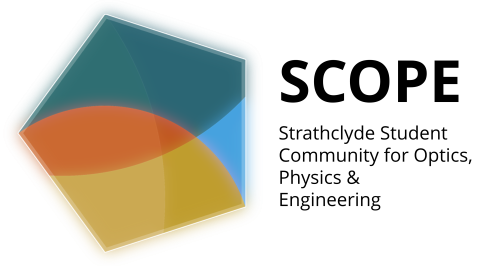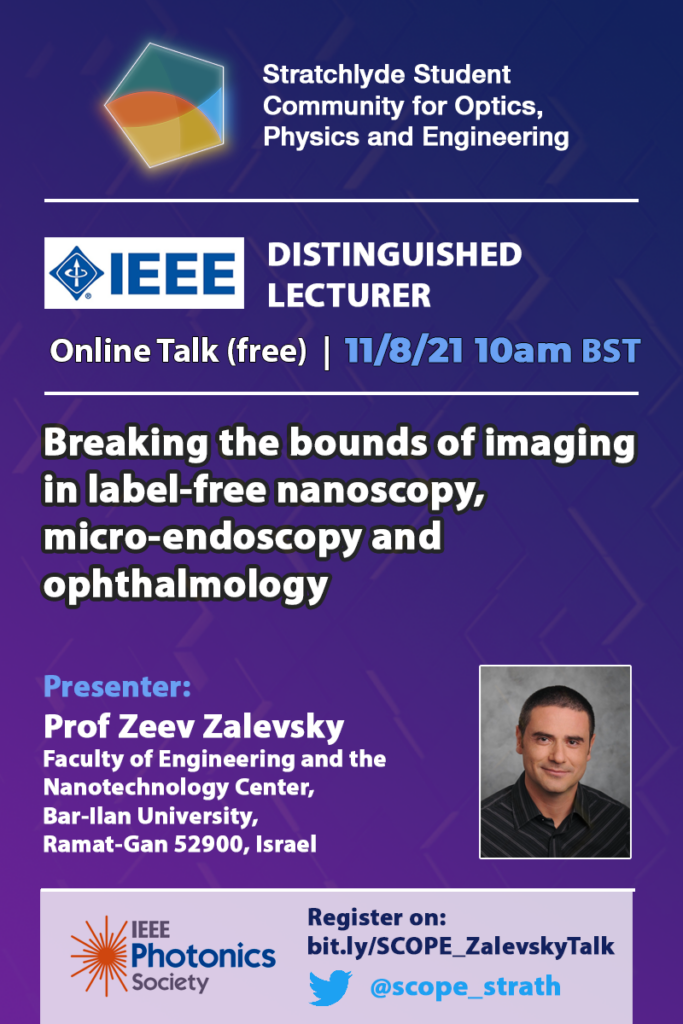We are excited to announce an online talk from IEEE Distinguished Lecturer: Prof Zeev Zalevsky, Bar-Ilan University, Israel.
Zeev Zalevsky received his B.Sc. and direct Ph.D. degrees in electrical engineering from Tel-Aviv University in 1993 and 1996 respectively. Zeev is currently a full Professor and the Dean of the faculty of engineering in Bar-Ilan University, Israel. His major fields of research are optical super resolution, biomedical optics, nano-photonics and fiber-based processing and sensing architectures. Zeev has published about 520 peer review papers, about 330 proceeding papers, 9 books (6 authored and 3 as an editor), 30 book chapters and about 100 patents. Zeev gave about 600 conference presentations with more than 200 invited/keynote or plenary talks.
Talk: Breaking the bounds of imaging in label-free nanoscopy, micro-endoscopy and ophthalmology
Wednesday 11/8/2021 from 10am (BST) || webinar is free to access, please register via this link.
Synopsis:
Imaging systems as well as human vision system have limited capability for separation of spatial features and this information can also be extracted only from depth limited range. The reasons to the resolution and depth of focus limitations are related to the effect of diffraction i.e. the finite dimensions of the imaging optics as well as the geometry of the sensor. In this talk I will present novel photonic approaches and means to exceed the above-mentioned resolution and depth of focus limitations and show how those concepts can be adapted to micro endoscopy as well as to microscopy related configurations as well as embedded into ophthalmic device while aiming to correct visual deficiencies. In the case of micro-endoscopy, I will show how projection of high-resolution wavelength dependent or time dependent random codes can enhance the resolution of the collected light. Those concept of wavelength and time multiplexing super-resolved imaging will also be demonstrated for imaging through biological scattering medium such as biological tissues and liquids as blood. The projected wavelength and time dependent high-resolution encoding patterns are sent via laser-based illumination fiber while the collected light is collected via ultra-thin multi-core imaging fiber-based endoscope. Then, in the case of microscopy I will present how the resolution limit can go below sub-wavelength bound towards nanoscopic imaging while using label-free configurations involving time multiplexing (time dependent light collection) based upon label-free non-static nano-particles either moving in uncontrolled Brownian motion or being manipulated with light. The presented realizations either use metallic nanoparticles or silicon coated nanoparticles. The last part of the talk will be related to extending the depth of focus of imaging systems in all-optical manner while introducing “interference” effect based extended depth of focal imaging (rather than diffraction and refraction based). The proposed extended depth of focus approaches will be implemented in ophthalmic usage on top of conventional spectacles, contact lenses and intraocular lenses while aiming to simultaneously correct various visual refractive errors, such as myopia, hyperopia, presbyopia, regular/irregular astigmatism, as well as their combinations. I will also mention how this interference-based extended depth of focus approach can be combined with nanoparticles and laser-based treatment of the surface of the cornea.

